After an arduous week scraping gum off The Stately Beat Manor ceiling and cleaning crushed PBR cans out of the infinity pool, the Beat Staffers were ready for a week long nap when suddenly, Lobo blew the hinges off the long-locked bathroom door, howling with anger and flexing his arm hairs threateningly. His bushy locks trailed in […]
Viewing: Blog Posts Tagged with: American history books, Most Recent at Top [Help]
Results 1 - 14 of 14
Blog: PW -The Beat (Login to Add to MyJacketFlap)
JacketFlap tags: Jason, Rai, Doctor Who, Archie, Dark Horse Comics, invader zim, Top News, Ethan Young, Book of Death, BRPD, frasier irving, grnt morrison, Add a tag
Blog: PW -The Beat (Login to Add to MyJacketFlap)
JacketFlap tags: lat, Kibbles 'n' Bits, Jason, peter jackson, krazy kat, little nemo, aidan koch, Top News, Charles Burns, Nitnit, dylan horrocks, cristolphe blain, michelle mclaren, peter maresca, Add a tag
§ Actually, Julian Darius wrote the headline used in this KnB title, but it’s the essential comics match up of all times, right? Also, Winsor McCay wasn’t a very good letterer. IN case you’re wondering where I stand, I love them both, but I’ve always been a Krazy Kat girl—there was just more substance to it.
§ Speaking of great early 20th century comic strips, here’s a write up of Peter Maresca’s recent talk on this topic, which I really wanted to go to, but couldn’t, luckily…here’s a write up by Monica Johnson.
§ In Malaysia, they are introducing the ‘Kampung Boy Award’ to recognize local talent.
Malaysian Cartoonist Club executive council member Ahmad Hilmy Abdullah said the idea to introduce the award was mooted by Malaysian cartoonist icon Datuk Mohammad Nor Khalid or Lat, together with other cartoonists in the country. He said with the involvement of many cartoonists and animators in the country’s arts industry now, it was time for such an award to be introduced.
§ This Janelle Asselin interview with Archie Comics Publicity VP Alex Segura is a must read, just because Alex is one of the nicest guys in comics and one of the very, very best at his job. HOW DOES HE DO IT?
CA: What sort of responsibilities are at the top of the list for someone in your career?
AS: You have to be a good communicator, writer and people person. I’ve met people who are very organized, detail-oriented and know a lot about comics, but they can’t have a conversation. That’s fine, but you’re probably not going to be a publicist. Like I said before, you can have all the contacts in the world, but if you don’t know how to talk to them – as honestly as possible – then it’s pointless. Writing skills are key – you have to be able to craft convincing text, whether it’s an email to a reporter, a pitch letter with a review copy or a presentation to your internal staff – you have to know how to string sentences together that are clear, easy to understand and that have a point of view. We’re on a 24-hour news cycle now. I know that’s a tired term, but it’s true. If that email you send to a reporter is long-winded, doesn’t get to the crux of your pitch right away or is confusing, you’ve lost that moment and you may have lost that reporter. Also, if you make a mistake, own up to it. We’re all people, we all have bad days – I think being human in a situation where your job is all about interacting with people inside and outside your office is really important. I’m not perfect at this, but I try to be as understanding as possible. You have to be a social creature. You have to know how to have a conversation with a complete stranger without too many awkward pauses. You should be a good listener, because publicity isn’t just about telling, it’s a conversation. You should go into a pitch knowing that the detailed thing you’re offering isn’t going to come out exactly the way you planned it because it’s going through the filter of someone else. But, knowing that, you should let the people who are also waiting on the story from your side know the chance of this.
§ Graeme McMillan is back at Newsarama? Here he takes down Tim Burton and Grant Morrison for recent pooh-poohing of things they did themselves in the past:
In its way, it’s oddly disheartening to see both men — who, to different degrees, owe much success to the very things they’re campaigning against — make these comments. Part of it is the uncomfortable feeling of gratefulness that ensues, sure, as well as that awkward sense that maybe all creators eventually become curmudgeonly and begrudge that which they’re no longer a part of (See also: Alan Moore, Frank Miller). But even moreso, there’s the fact that, really..? Both men are wrong.
§ Future Wonder Woman director Michelle McLaren is interviewed at Vultere and let’s slip that Wonder Woman hasn’t actually been green lit yet. Ok.
§ Zainab Akhtar looks at The Speed Abater by the great Cristolphe Blain:
I have two favourite books set on ships (it’s a rather specific thing)- Ian Edginton and D’Israeli’s Leviathan, and this. Both manage to convey the monumental size of the engines, the scale of pipes and machines, the heat and grime, the noise, the knots of metal, the atmosphere. Much like spacecraft in sci-fi films like Alien, the ship here is a character in itself, and these are the innards; the belly of the beast which set the tone of what’s to come as the men become lost and confused, delving further into their psyches. Blain’s gone hatching happy in this panel: it’s the first time the men are seeing below deck and the combination of impressive grandeur and realistic depiction is on point- all twisty, bronze pipes, looming space, steam and shade.
I also have a soft spot for comic books set at sea where people slowly go nuts or have horrible, horrible things happen to them, including both of these. Among the others: Mattotti’s Fires, Drew Weing’s Set to Sea (just rereleased), Sammy Harkham’s Poor Sailor, and Tony Millionaire’s Maakies much of the time. There’s also Chris Wright’s Blacklung, which I didn’t enjoy as much because his character designs seemed inexpressive to me. I know that’s part of his style, but it just didn’t work for me.
§ BEST OFS! •Hugh Armitage at Digital Spy has a pretty good list.
• The Vancouver Sun
• Abraham Riesman at Vulture

• And Sean T. Collins who has the most PARTICULAR list I’ve read. That’s a panel from Koch’s Configurations above.
Sex Fantasy, Sophia Foster-Dimino
911 Police State, Mr. Freibert
Baby Bjornstrand, Renee French
Palm Ash, Julia Gfrörer
Configurations, Aidan Koch
§ And for those ready to move on to 2015 (and who isn’t?) the Comics Reporter’s Five For Friday has a bunch of lists of stuff coming out next year people are looking forward to.
§ First second twofer! Gina Gagliano addresses Should You Quit Your Day Job When You Get a Book Deal? and also I interviewed senior Editor Callista Brill for Publisher’s Weekly More to Comic podcast. She talks about the making of The Wrenchies, Andrew the Giant, and Jay Hosler’s upcoming Last of the Sandwalkers, which is all about beetles.
§ I would imagine many folks would be interested in Tips for getting ‘Staff Pick’ on Kickstarter.
§ Cosplay from the The 36 best cosplay from Mumbai Comic Con 2014. Spoiler: it’s good.
§ Peter Jackson is quoted saying he never read a comic book in his life so he can’t direct a comic book movie. Except he’s supposed to direct the next Tintin, isn’t he? I haven’t seen much talk about that in the Hobbit pr tour. Also, I think it is safe to say that Jackson has read Tintin, so…something is amiss.
§ I guess this could be construed as concern trolling, but Bleeding Cool’s makeover is actually a text only “makeunder” that goes back to the good old days of Geocities. YUCK. I mention this so I can quote the Outhouse headline: North Korean Hackers Strike Again, Deface Bleeding Cool’s Website. In protest, I made the image on the Beat’s front page BIGGER.
§ I tend to take the Good E-reader site with a grain of salt but here’s ae-Reader Industry Year in Review
§ TWO from Bob Temuka. A long interview with Dylan Horrocks and a review of the beautiful disgust of Charles Burns: X’ed Out, The Hive and Sugar Skull. The finish of Burns’ “Nitnit trilogy” as I like to call it, was one of the most perfect and amazing books of the year.
§ Finally, Norwegian cartoonist Jason reviews Lethal Weapon.
Blog: OUPblog (Login to Add to MyJacketFlap)
JacketFlap tags: oral, *Featured, oxford journals, Oral History Review, OHR, Jason Steinhauer, OHMAR, Oral History in the Mid-Atlantic Region, regional oral history, steinhauer, ohmidatlantic, jasonsteinhauer, strategic, History, Journals, jason, Oral History, Add a tag
By Jason Steinhauer

Jason Steinhauer. Photo by Amanda Reynolds
The Board of Officers of Oral History in the Mid-Atlantic Region (OHMAR) recently wrestled with this question over the course of a year-long strategic planning process. Our organization had reached an inflection point. New technologies, shifting member expectations and changing demographics compelled us to re-think our direction. What could we offer new and existing members that local or national organizations did not —and how would we offer it?
Our strategic planning committee set out to answer these questions, and to chart a course for 2014 and beyond. Four board members served on the committee: Kate Scott of the Senate Historical Office; LuAnn Jones of the National Park Service; Anne Rush of the University of Maryland; and myself, of the Library of Congress, acting as director. OHMAR dates back to 1976 and has been a vibrant organization for nearly 40 years. Therefore, our goal was not to re-invent but rather to re-focus. To start, we identified OHMAR’s core values. We determined them to be:
- Openness
- Passion
- Community
- Education
- Expertise
Whatever our new direction, we would stay true to these ideals.
For months, the committee discussed how OHMAR could better serve members with these values in mind. We also polled membership and consulted with past organization presidents about what they valued in OHMAR and what they wanted in the future. What emerged was a plan with several key considerations for how any regional organization can serve its membership:
- Build community. Through digital technology, formal and informal events, and low-cost membership, regional organizations can foster meaningful professional networks, offer support, and create opportunities for intimate interaction on an ongoing basis.
- Provide targeted resources. Local knowledge can allow regional organizations like OHMAR to provide targeted educational, professional, and monetary resources. For example, oral historians working for the federal government in and around Washington, D.C., have unique challenges to which OHMAR can provide specific tools, tips, and advice.
- Leverage expertise. Our region boasts tremendous expertise courtesy of oral historians such as Don Ritchie, Linda Shopes, Roger Horowitz, and more. These experts can help educate new members, especially those from fields such as journalism, the arts, public history, and advocacy on best practices.
- Offer meaningful opportunities. By forming new committees, we can offer members meaningful ways to get involved and gain leadership experience.
We presented our findings in the form of a new Strategic Plan at our April 2014 annual meeting. The intimate two-day event was attended by more than 60 oral historians and reaffirmed the value of regional conferences. In fact, feedback stated that for some, ours was the best conference they had ever attended. On the afternoon of the second day, our members ratified OHMAR’s Strategic Plan for 2015-2020. Accordingly, next year, we will focus on improving our internal operations, updating our bylaws, and overhauling our website, member management system, and e-newsletter. In the following years, we will also introduce several new initiatives, including a Martha Ross Memorial Prize for students, named for our beloved founder.
We will be discussing our strategic plan and the role of regional oral history organizations in a panel at the Oral History Association’s upcoming 2014 annual meeting in Madison, Wisconsin. We hope you’ll join us and share your ideas.
Jason Steinhauer serves on the Board of Oral History in the Mid-Atlantic Region (OHMAR). He directed the organization’s strategic planning process from 2013-2014. You can follow Jason on Twitter at @JasonSteinhauer and OHMAR at @OHMidAtlantic.
The Oral History Review, published by the Oral History Association, is the U.S. journal of record for the theory and practice of oral history. Its primary mission is to explore the nature and significance of oral history and advance understanding of the field among scholars, educators, practitioners, and the general public. Follow them on Twitter at @oralhistreview, like them on Facebook, add them to your circles on Google Plus, follow them on Tumblr, listen to them on Soundcloud, or follow their latest OUPblog posts via email or RSS to preview, learn, connect, discover, and study oral history.
Subscribe to the OUPblog via email or RSS.
Subscribe to only history articles on the OUPblog via email or RSS.
The post Re-thinking the role of the regional oral history organization appeared first on OUPblog.
Blog: PW -The Beat (Login to Add to MyJacketFlap)
JacketFlap tags: Comics, self-publishing, Culture, Fantagraphics, Top Shelf, Jason, Abrams, Boom Studios, Nancy, Daniel Johnston, David Mazzucchelli, Charlie Kochman, Shannon Wheeler, MTV Geek, Liza Donnelly, Charles Forsman, Jess Fink, Nancy Lambert, Angelman, Kim Deitch, mocca 2012, Adam Staffaroni, Bradley Hatfield, Denis St. John, Derf Backderf, Fredrik Stromberg, Hans Rickheit, Jacq Cohen, Kristy Valenti, Marion Vitus, Nicolas Mahler, Sophie Yanow, Add a tag
BY JEN VAUGHN – Fantagraphics Books isn’t necessarily THE MAN of the comics world but since I’ve only ever self-published my own comics, MoCCA 2012 was my first two days on the job as a staff member of the independent comics publisher. There are more than a few differences between the two experiences. Read on!
Fantagraphics’ Kristy Valenti speaks with Kim Deitch before his signing
1- The Work, as in amount of time spent working the table is constant. Seeing as there is a bit more marketing, publicity and established artists’ work on the table we rarely had to describe the content of the books. Jacq Cohen, Kristy Valenti and me (along with former intern Sophie Yanow) manned the four tables full of books and artists signings. Kristy and Jacq barely left the tables to eat and I’m pretty sure that bottle of lemonade under the table was not . . . lemonade.
2- The Digs where we stayed were MoCCA-recommended because they were smack-dab in the middle of Manhattan, right next to the Armory making for an easier walk each morning and night. The hotel room was tiny but the expansive lobby (pictured above) was an homage to both Breakfast at Tiffany’s and those plastic hamster balls. Originally built in 1903 and called the Martha Washington, this former women’s residence-turned-hotel was the perfect place for the woman of Fantagraphics to rest their heads. No long train rides in from Brooklyn this time!
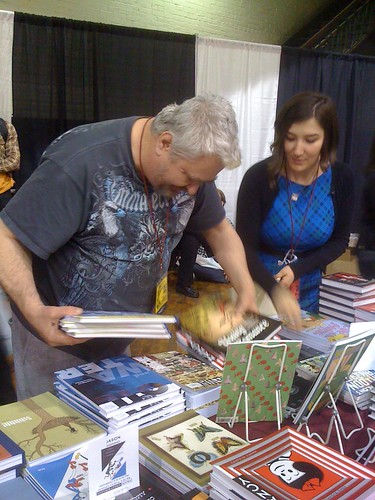
Daniel Johnston and Fantagraphics’ Jacq Cohen
3- Cross-promotion of artists turned out to be one of the joys. Some Fantagraphics artists spoke on panels (like the ever-charming Shannon Wheeler) so an attendee would grab his Oil & Water book but then toddle off in search of a signature at the Boom! Studios table where Wheeler was selling his Too Much Coffee Man. Likewise, folk artist/musician Daniel Johnston was too busy pouring over our new Nancy book to be bothered to remember what time his book signing was until Boom! editor Adam Staffaroni herded him in the right direction.
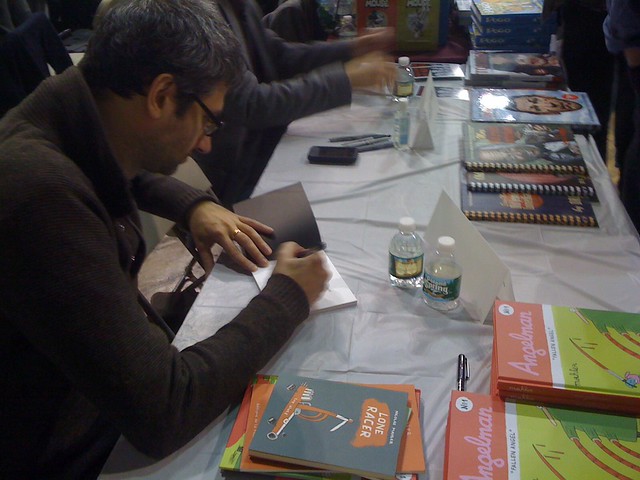
Nicolas Mahler signs not only his Fantagraphics book called Angelman but also previous publications bought from the Top Shelf table.
4- Table set-up and take down turned out to be an all-day
Blog: DRAWN! (Login to Add to MyJacketFlap)
JacketFlap tags: comics, Jason, Add a tag
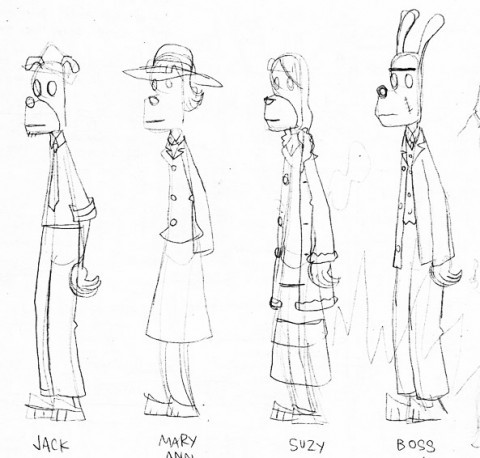
(via Q & A with Jason | The Casual Optimist)
A nice interview with Norwegian cartoonist Jason, including some rough sketches and process talk, which I always love.
Blog: illustration pages (Login to Add to MyJacketFlap)
JacketFlap tags: illustrators, Jason, C, Cooper, lowbrow art, facebook pages, 10 Poster Designs, Jason Cooper, illustrator, Add a tag
Born in a small conservative town in the Bible Belt of the Deep South, artist Jason Cooper was raised on a steady diet of KISS, movie monsters, punk rock, skateboarding and heavy metal. It’s no surprise then that this unusual paradox led his artistic endeavors into the unorthodox world of blotter acid art, rock posters, tattoo art and other underground forms of self-expression.
Combining his lowbrow style and often dark humor with his interests in religious iconography and erotica, Jason forges his own path in a world of safe and stagnate art to create emotionally challenging works which invoke the visual senses to examine the always present — and sometimes uncomfortable — under layer of motive and meaning.
Jason's screen printed posters can be found around the world, in galleries from San Francisco to Manchester, and on display at Hard Rock Cafe restuarants everywhere. He also participates regularly in solo and group exhibitions, which have included Grasping at Straws (2001), The Meat Annex (2002), Artifacts of the Improbable (2002), Mundo Gigantico del Rock (2003), Complimentary Headache (2004), and Graphic Noise (2005), and has been an active participant in the Flatstock sh
Blog: illustration pages (Login to Add to MyJacketFlap)
JacketFlap tags: Jason, tattoo art, P, Pedersen, Add a tag
Way back in February tattoo artist Jason Pedersen was highlighted on Illustration Pages for his exquisite tattoo work. Since the main focus of that article was his tattoo art none of Jason's amazing paintings were featured - until now.
To see more of Jason's work visit his site, The Illustration and Tattoo Artistry of Jason Perdersen.
Blog: illustration pages (Login to Add to MyJacketFlap)
JacketFlap tags: Jason, P, tattoo artist, facebook pages, Pedersen, Add a tag
There’s almost no greater personal connection between artist and client than that of the tattoo artist and his patron. Think about the level of trust you must have in an artist’s abilities to commit to wearing their artwork permanently on your body.
Looking at the artwork of Arizona tattoo artist Jason Pedersen it’s easy to see how he has earned that trust with so many who have decided to make that commitment. Each of his pieces speaks to someone’s personal journeys through life, whether it’s through the whisper of a flower or the screams of a tormented skull ripping through the flesh. Jason’s ever expanding gallery travels the roads of Arizona on canvases as unique as the grains of sand which make up its Painted Desert. Jason Pedersen is an artist whose art helps people heal and move forward, mourn loss and celebrate life.
Jason is a classically trained artist with a degree in Illustration from the School of Visual Arts in New York City.
Blog: DRAWN! (Login to Add to MyJacketFlap)
JacketFlap tags: video, Animation, Jason, Norwegian, Illustration, Comics, Add a tag
I didn’t know this even existed, but I’m excited to see it — an animated film based on Norwegian cartoonist Jason’s graphic novel SHHH!
I’m not sold on the CGI environments, but it otherwise seems to be quite a fairly accurate adaptation of Jason’s moody pacing and already film-like silent storytelling.
(via Mike Lynch)
Blog: OUPblog (Login to Add to MyJacketFlap)
JacketFlap tags: travel, History, The, culture, Cultural, Geography, A-Featured, trains, America, A, railroad, World History, Leisure, Jason, Andes, Wilson, South, South America, Jason Wilson, rail, Add a tag
Megan Branch, Intern
In his new book, The Andes: A Cultural History, Latin American Literature professor Jason Wilson looks at the dramatic influence The Andes have had on South American history and on literature from all over the world. Since we’re nearing the end of travel season, I’ve excerpted a passage below about the uniqueness of rail travel in the Andes—including altitudes that tend to make most people sick.
Crossing the Andes has always meant building bridges, roads and, more recently, railways. In 1934 a recently-married Victor Wolfgang von Hagen, a naturalist and prolific publicist of Latin America, reached  Ecuador by boat to visit Chimborazo and the Galapagos Islands. Before the railways had been built from the tropical disease-ridden coast at Durán, across the river from Guayaquil, to Quito 290 miles away, the journey on horseback had taken eight days. Then the American Harman brothers (Archer and John) built their track, switchbacking up the Nariz del Diablo after the Chan Chan river gorge. Work had begun in 1897 and was completed in 1908 in what was a great feat of railway engineering (until suspended in 1983 and again in 1998). It climbed 10,626 feet in fifty miles and reached a pass at 11,841 feet, which von Hagen likened to the tundra in its bleakness, before descending to the Quito plateau. Theroux had wanted to ride this train, but it was overbooked.
Ecuador by boat to visit Chimborazo and the Galapagos Islands. Before the railways had been built from the tropical disease-ridden coast at Durán, across the river from Guayaquil, to Quito 290 miles away, the journey on horseback had taken eight days. Then the American Harman brothers (Archer and John) built their track, switchbacking up the Nariz del Diablo after the Chan Chan river gorge. Work had begun in 1897 and was completed in 1908 in what was a great feat of railway engineering (until suspended in 1983 and again in 1998). It climbed 10,626 feet in fifty miles and reached a pass at 11,841 feet, which von Hagen likened to the tundra in its bleakness, before descending to the Quito plateau. Theroux had wanted to ride this train, but it was overbooked.
Another railway engineering feat is the pass at Ticlio, on the line from Lima to Tarma in Peru, the highest railway pass in the world built above the Rimac gorge by the “indefatigable” and “unscrupulous” New York-born Henry Meiggs (actually at 15,865 feet). According to Wright, over 7,000 Andean and Chinese labourers died building a railway that has 66 tunnels, 59 bridges and 22 switchbacks. You can ask for oxygen masks on the train that now runs from Arequipa to Puno on Lake Titicaca, where the station of Crucero Alto is 14,688 feet high. The 1925 South American Handbook warned that soroche or mountain sickness was “usually the penalty of constipation”. Paul Theroux felt dizzy and sweated up this line, and the “astonishing” beauty of the landscape from the train window was ruined. Then a molar ached. He later learned that blocked air in a filling creates pressure on the nerve: “it is agony,” he wrote. The passengers started vomiting, until balloons filled with oxygen were handed around before they passed through the highest railway tunnel in the world. As a train enthusiast, Theroux marveled at the engineering, supervised by Meiggs between 1870 and 1877 the year he died, but surveyed by a Peruvian called Ernesto Malinowski. There is a Mount Meiggs near Ticlio.
Another gringo, Dr. Renwick, took a train from Arequipa to Cuzco, spotting the extinct volcano of Vilcanto at 17,000 feet, “one of the best known in all Peru”, and nearby Ausangate, towering over all others at 20,000 feet and visible a hundred miles away. He acutely remarked that Peruvians were so accustomed to these mountain giants seen from the train that they hardly noticed a peak like Huascarán, which “anywhere else would fill the mind with astonishment.” He is still right.
Blog: OUPblog (Login to Add to MyJacketFlap)
JacketFlap tags: Health, Sociology, mental health, Science, A-Featured, Medical Mondays, Psychology, fear, Daniel, Jason, paranoia, conspiracy theory, Daniel Freeman, Jason Freeman, Freeman, Add a tag
Sarah, Intern
Daniel and Jason Freeman have written a groundbreaking new book defining paranoia’s impact upon not only the mentally ill but the population at large. Paranoia: The 21st Century Fear describe how exaggerated anxieties regarding terrorism, crime, and
illness distress one out of four individuals today. In this excerpt from Paranoia, the Freemans look at several social issues that have instilled paranoia in society throughout the century.
In the late 1980s the psychologists Jerry Mitchell and Arlyn Vierkant discovered a battered cardboard box in a store room of Rusk State hospital in east Texas. The cardboard box turned out to contain details of more than 500 people who had been admitted to the hospital in the 1930s. Around 150 of those 500 were suffering from severe mental illness.
Mitchell and Vierkant decided to compare the stories of those 150 patients from the 1930s with the stories of 150 patients with similar problems from the 1980s. In so doing, they were exploiting a rare and fascinating opportunity to compare paranoid thoughts across half a century.
What they found was that, to some degree at least, people’s paranoid fears reflected the times they lived in. So patients from the 1980s believed they were under threat from the Secret Service, the Mafia, the Soviets, or—a little bafflingly—from lesbians. Telephones and houses were bugged. Radar and computers were being used to control people from afar.
Clearly radar and computers weren’t going to feature in the accounts from the 1930s, but neither did the Secret Service, for example. These kinds of powerful organizations or groups were noticeably absent from the fears of 1930s’ patients, though God and other religious figures were often an element (east Texas has always been a heartland of fundamentalist Christianity). One possible explanation for this change is the advent of television, which brought a whole new world—and a whole new world of threats—to a generally poor, rural, and isolated population. Before television, the threats people perceived were likely to come from more personal, parochial sources.
This focus on the ‘fear figures’ of the day is reflected in an account written in 1911 by the celebrated Swiss psychiatrist Eugen Bleuler. (Bleuler was the man who coined the term ‘schizophrenia’ and who treated the legendary ballet dancer Vaslav Nijinsky when he fell ill with the condition.) Bleuler wrote: ‘The Freemasons, the Jesuits, the “black Jews”, their fellow-employees, mind-readers, “spiritualists”, enemies invented ad hoc, are constantly straining every effort to annihilate or at least torture and frighten the patients.’ In the early twentieth century it’s Freemasons, Jesuits, and ‘black Jews’—all groups then rumoured to be conspiring to bring down society. By the 1980s it’s the Mafia or the Russians. Today it’s MI5, the government, or Al-Qaeda.
(Some of our fears, on the other hand, have proved remarkably resilient. Witches, for example, were for many centuries prominent—and malevolent—figures in the popular imagination, as we can see in the quote from Robert Burton on page 21 above. And in the twenty-first century, witches still seem a force to be reckoned with. In one survey, 21 per cent of Americans said they believed in witches. The figure is lower for the UK and Canada, 13 per cent, though this is still higher than one might have guessed. Surprising though these findings might seem, they are as nothing when compared to the hold that ghosts apparently continue to exert over us. In the same survey, 40 per cent of Britons, 37 per cent of Americans, and 28 per cent of Canadians professed a belief in haunted houses.)
Both the Rusk State hospital study and Bleuler’s work focus on the paranoid delusions of people with serious mental illness. But most of us have paranoid thoughts from time to time. Who are we scared of?
If I walk past strangers in the street and they’re laughing, I always suspect they’re laughing at me. Paul, aged 21.
At work, if I’m restocking the shelves and other staff members are nearby, I sometimes think they’re joking and talking about me, but I know they aren’t really. Doreen, aged 58.
I once thought a housemate was trying to steal my possessions because I often caught her in the corridor near my room. I got really wound up about this and ended up locking some of my valuables in the garden shed. I began to have other thoughts—like she was trying to poison me because she was always asking me to eat food she’d cooked and giving me new foreign alcohol to try. Liz, aged 24.
If I’m sitting on the tube and I catch someone’s eye repeatedly, I wonder why they keep looking at me. Chris, aged 30.
These comments are taken from a survey we carried out on a randomly selected sample of the general public. People in the street, as you might say. It turns out that, when it comes to our own personal bogeymen, the range is as diverse as you could imagine. Strangers, workmates, housemates, friends, family—you name it, we’re afraid of them. And sometimes we don’t even have a particular person in mind; instead, we feel a general, non-specific sense of threat.
Incidentally, it might seem from this discussion that there is a clear distinction between the sorts of persecutors conjured by people with severe mental illness and those of us with ‘everyday’ paranoia. The former group tend to worry about external, remote, impersonal threats; the latter about people closer to us. Of course, like all generalizations the reality isn’t so neat. People with, say, schizophrenia are often fearful of family members or neighbours. And many people without mental illness distrust the government or other state agencies. What we can say for sure though is that paranoia will point the finger at anyone. Everyone is a potential threat.
Blog: Jessica Burkhart (Login to Add to MyJacketFlap)
JacketFlap tags: jason, boys blogging books, Add a tag
Got a favor for you guys...my brother, Jason, just posted his first review over at Boys Blogging Books. If you have a sec to check it out a leave him a comment, I know he'd love it! It's his first blog post (ever!) so I want him to get a little comment love. :)
Find it here!
Thank you!!
Blog: Farm School (Login to Add to MyJacketFlap)
JacketFlap tags: Cybils, biography, children's historical nonfiction, American history books, civil rights movement, Add a tag
We Are One: The Story of Bayard Rustin by Larry Dane Brimner 48 pages; for ages 8 and up Calkins Creek Books Available from Amazon.com or your local bookstore (BookSense) (Cybils affiliate links) or in Canada at Chapters Review copy from the publisher We Are One is the handsome new photobiography of Bayard Rustin (1912-1987), the American pacifist and civil rights activist. While Rustin is
Blog: Farm School (Login to Add to MyJacketFlap)
JacketFlap tags: history books, American history books, history, children's nonfiction, American history, American Revolution, children's historical nonfiction, Add a tag
I ran out of time yesterday, and wanted to add this list of suggested readings to go with my post yesterday about David McCullough's new 1776: The Illustrated Edition, the illustrated and abridged edition of Mr. McCullough's original 1776. All of the children's books listed below are narrative histories and overviews of the period, rather than books about a particular element of the American




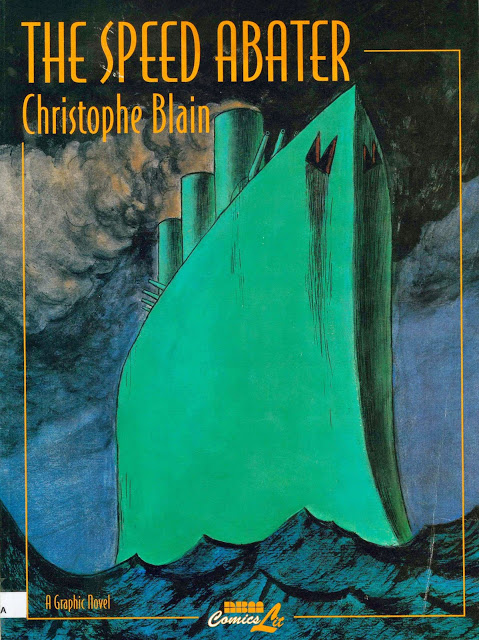
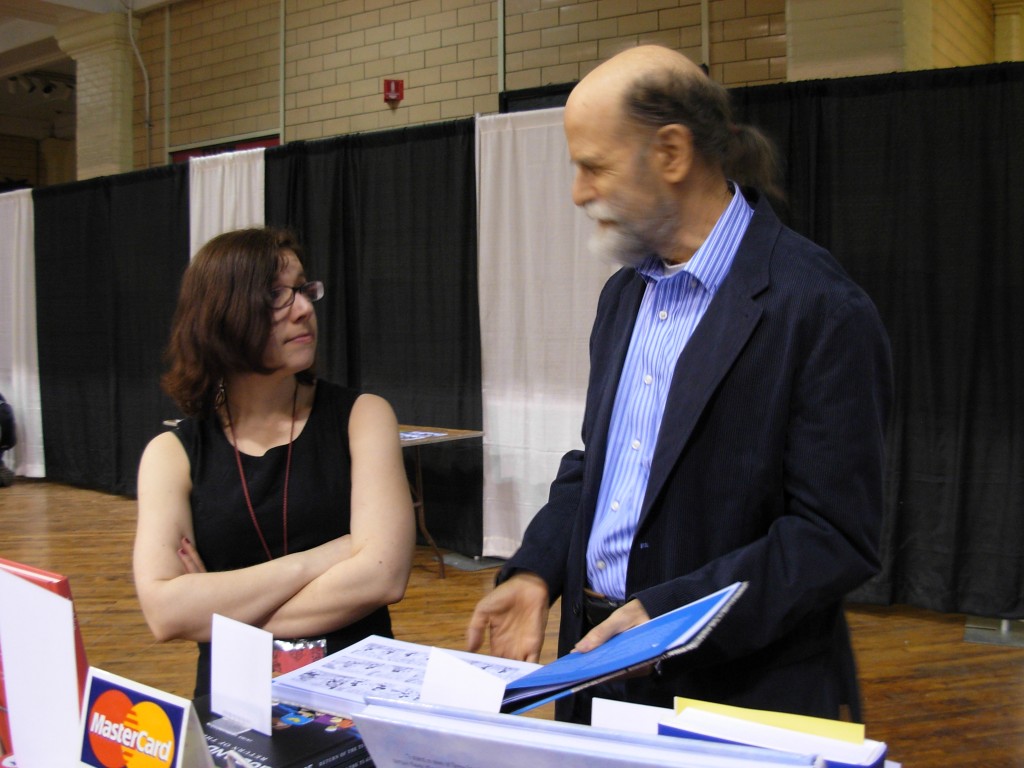







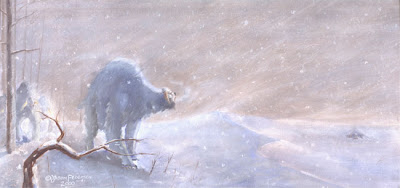
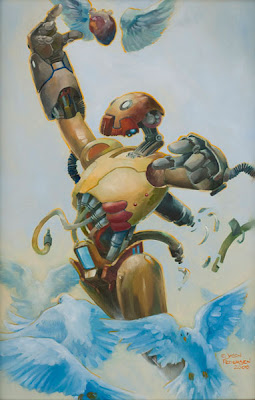


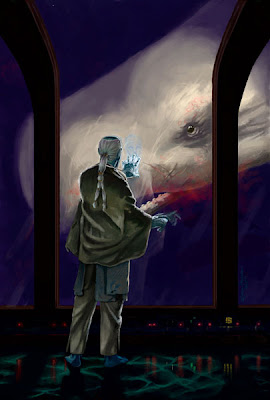








I assume Peter Jackson is equating comic book movie with superhero movie. Most people out there see it that way. They don’t look at Ghost World as a comic book movie, for example.
Yeah, I already though that Bleeding Cool was broken – seems to be geared towards mobile phones?
Not a great letterer, perhaps, but have you seen McKay’s animations of Gertie the Dinosaur (incl the unfinished sequel) and the Nemo animation? Great stuff!
Most mobile designs allow for some text. People read on their phones.
Tim Burton may be a curmudgeon these days, but I’m looking forward to BIG EYES (his first movie without either Johnny Depp or Helena Bonham Carter since 1996).
Stoke the Krazy Kat vs Little Nemo debate a bit with this link here:
http://comicstriplibrary.org/
I’d like to wallpaper a room with nothing but Little Nemo strips.